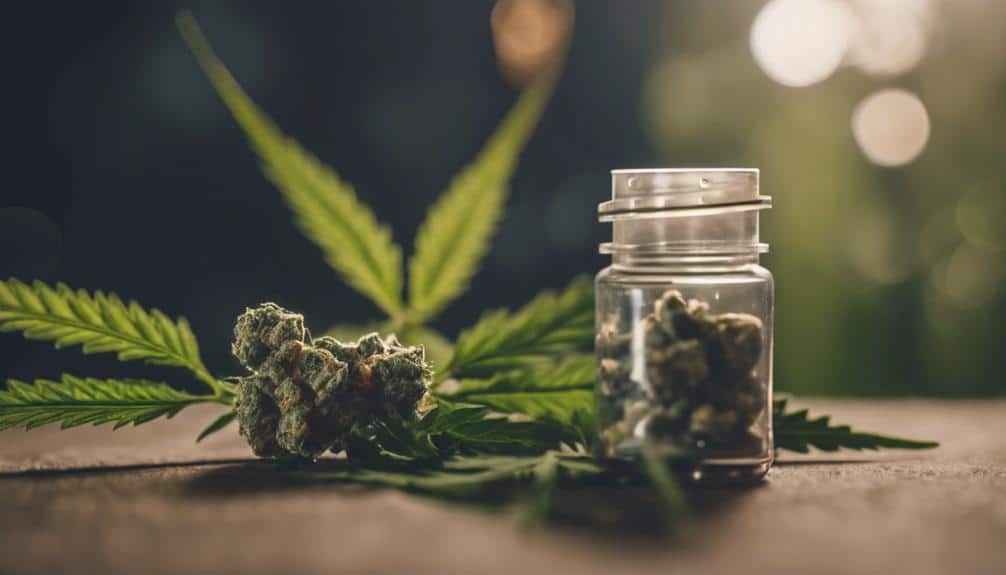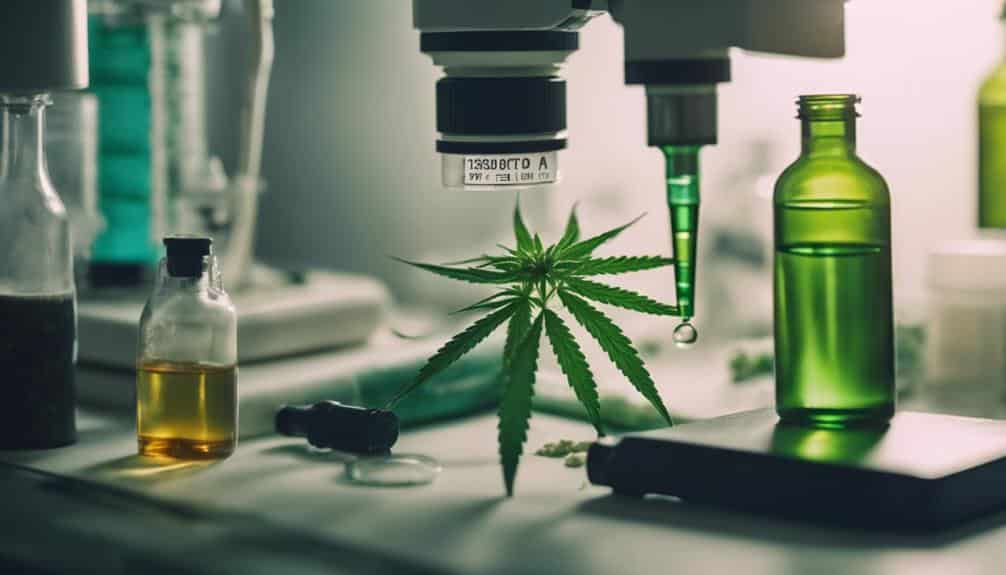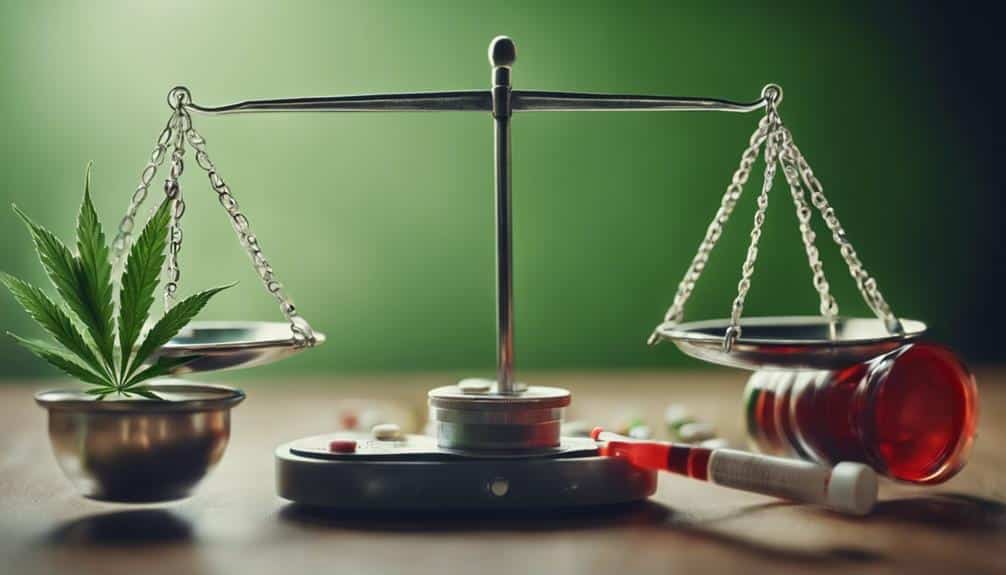Like a ship seeking safer shores in a storm, you might be searching for a less risky alternative to opioids for pain management. Medical marijuana is gaining attention due to its potential to alleviate pain without the severe side effects and addictive qualities of opioids. But is it truly a viable contender? Let’s set preconceptions aside and delve into the evidence that could plot a new course in our fight against pain. Will you join me in exploring this intriguing topic?
Understanding the Opioid Crisis

To fully comprehend the potential of medical marijuana as an alternative to opioids, you first need to understand the extent and causes of the opioid crisis. Opioid addiction statistics are alarming. In 2019 alone, nearly 50,000 people died from opioid-related overdoses in the United States, according to the Centers for Disease Control and Prevention. The crisis stems from multiple factors including over-prescription of painkillers and illicit drug sales like heroin.
Prevention strategies have focused on reducing opioid prescriptions, increasing access to treatment, and expanding harm reduction services. While these tactics have yielded some progress, the crisis remains severe and calls for innovative approaches. Enter medical marijuana—a potential alternative for pain management that carries a lower risk of dependency.
You can play a significant role in mitigating this crisis as an individual committed to service. Understanding the complexities of the opioid epidemic and alternatives like medical marijuana is your first step towards advocating policy changes, raising awareness, and supporting research to further explore this promising avenue. In doing so, you contribute to a holistic and compassionate response to a severe health crisis.
Medical Marijuana: An Overview
Building on your understanding of the opioid crisis, let’s delve into medical marijuana—its properties and potential uses in medicine. Medical marijuana refers to the use of the Cannabis plant or its chemicals known as cannabinoids for medicinal purposes. It’s important to note that while it’s the same plant used recreationally, cultivation methods and cannabinoid composition can differ significantly.
Several factors influence the properties of medical marijuana including:
- Different cultivation methods for marijuana
- Specific strains of the plant
- The plant’s cannabinoid composition
- The part of the plant used
- The method of consumption
Marijuana cultivation methods are crucial as they directly affect the cannabinoid composition—and hence—the therapeutic potential of the plant. There are over 100 different types of cannabinoids in marijuana, each with unique properties. The most well-known cannabinoids are delta-9-tetrahydrocannabinol (THC) and cannabidiol (CBD). While THC is psychoactive, CBD isn’t and has shown potential in treating several medical conditions. Understanding these properties is essential as they guide us in using medical marijuana responsibly and effectively as an alternative to opioids for pain relief.
Research on Marijuana for Pain Relief

Let’s examine the available research that highlights the potential of marijuana in relieving pain and how it compares to opioids. Recent studies show some cannabis strains’ efficacy in alleviating pain is comparable to, if not surpassing, that of opioids. This is a significant breakthrough, especially considering the risk of addiction and overdoses associated with opioid use.
While more research is needed, current findings suggest that appropriate Marijuana dosage guidelines could potentially offer a safer, more controlled approach to pain management. For instance, a 2018 study in the Journal of Pain Research found that nearly 97% of patients reported a reduction in opioid use when they were using medical marijuana. Moreover, 81% of patients reported that marijuana alone was more effective than using it in combination with opioids.
You’re probably wondering about the specifics. Well, it’s not as straightforward as prescribing a single strain or dosage. Various factors like the type of pain, patient’s tolerance level and specific chemical composition of the strain can influence its effectiveness. But promising evidence suggests we should seriously explore this potential alternative.
Patient Experiences With Medical Marijuana
Many individuals who’ve used medical marijuana report substantial relief from their chronic pain symptoms—often outperforming their previous opioid-based treatments both in efficacy and safety.
However, like all treatments, using cannabis isn’t without its issues. You should be aware of potential marijuana withdrawal symptoms which could include mood changes, sleep disruption and physical discomfort.
In terms of cannabis strain selection users have shared different strains have varying effects—it’s crucial to find one that best suits your specific needs for managing pain.
Here are some experiences reported by patients:
- An increased ability to engage in daily activities due to reduced pain levels
- Improved sleep, often disrupted by chronic pain
- Fewer side effects compared to opioid medications
- The opportunity to reduce or eliminate opioid use
- Enhanced overall quality of life
Legal Status of Medical Marijuana

In light of the benefits experienced by patients, it’s important to consider the legal status of medical marijuana which varies dramatically across different regions and countries. State regulations differ widely—some states fully embrace its use while others ban it outright. For example, California allows for comprehensive public and private use whereas Idaho maintains a full prohibition.
You’re also faced with federal opposition. Despite state-level progress, the U.S. federal government continues to classify marijuana as a Schedule I drug—on par with heroin and LSD. This classification creates a striking paradox: medical marijuana is both a legal treatment option in many states and an illegal substance on a federal level.
As someone desiring to serve others, it’s crucial for you to understand this complex legal landscape. It’s not just about legality—it’s about the potential to alleviate suffering through an alternative to opioids. Evidence-based research supports this potential yet comprehensive adoption faces legal roadblocks. This dichotomy paints a vivid picture of the challenge ahead—advocating for change amidst ongoing federal opposition.
Conclusion
In grappling with the opioid crisis, we should consider an ancient remedy for pain relief—marijuana. With research suggesting its efficacy and safety, and patients praising its benefits, medical marijuana offers a promising alternative. However, the legal maze surrounding its use calls for clearer policies.
I invite you to visit us at Fells Point Cannabis Docs of Maryland. Our team is dedicated to educating patients about the potential benefits of medical marijuana and helping navigate its responsible use. If you have questions or want to learn more about this promising pain relief alternative, please don’t hesitate to give us a call. We’re here to help and look forward to welcoming you.
Could this ancient remedy offer a modern solution to the opioid epidemic? Only time—and further research—will tell.

